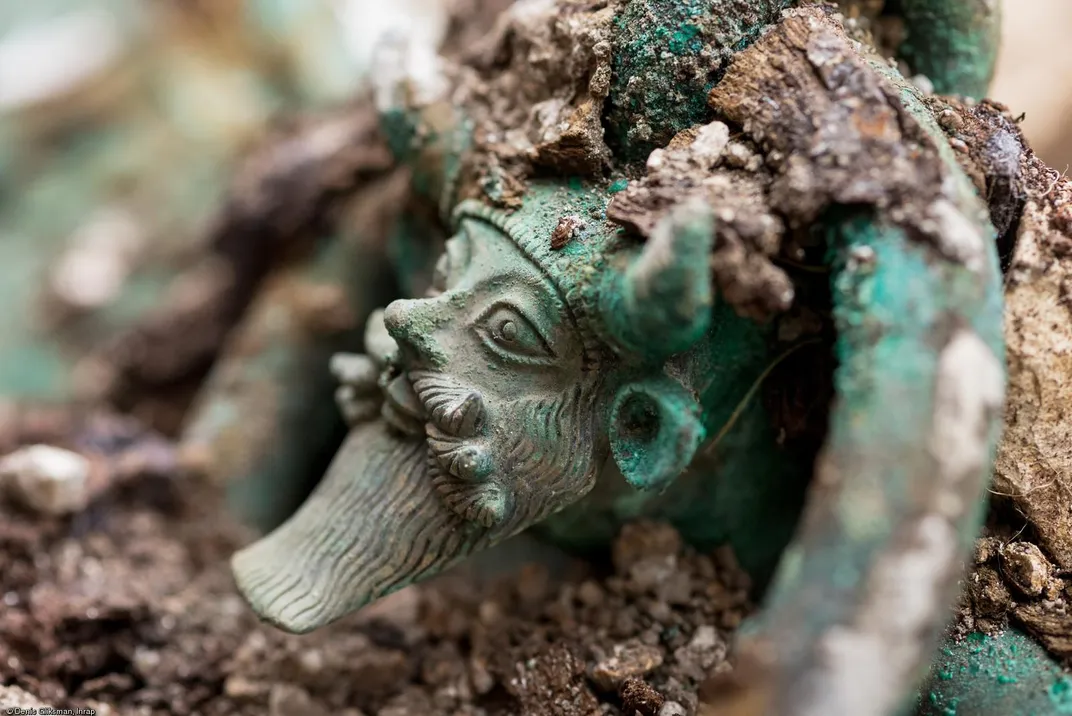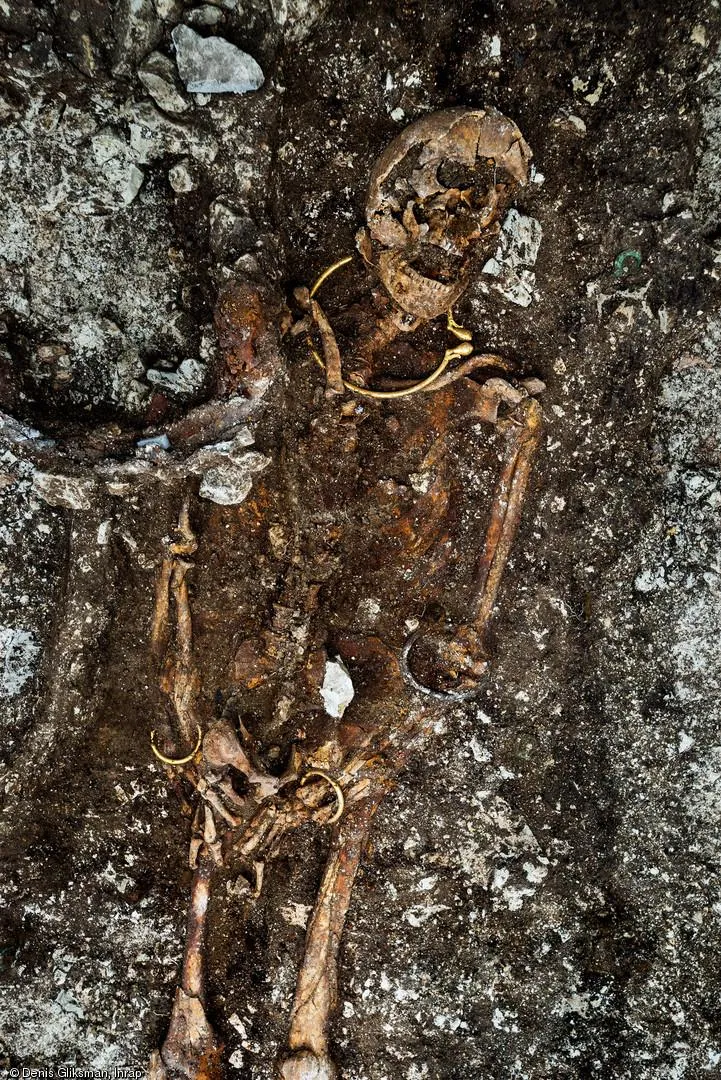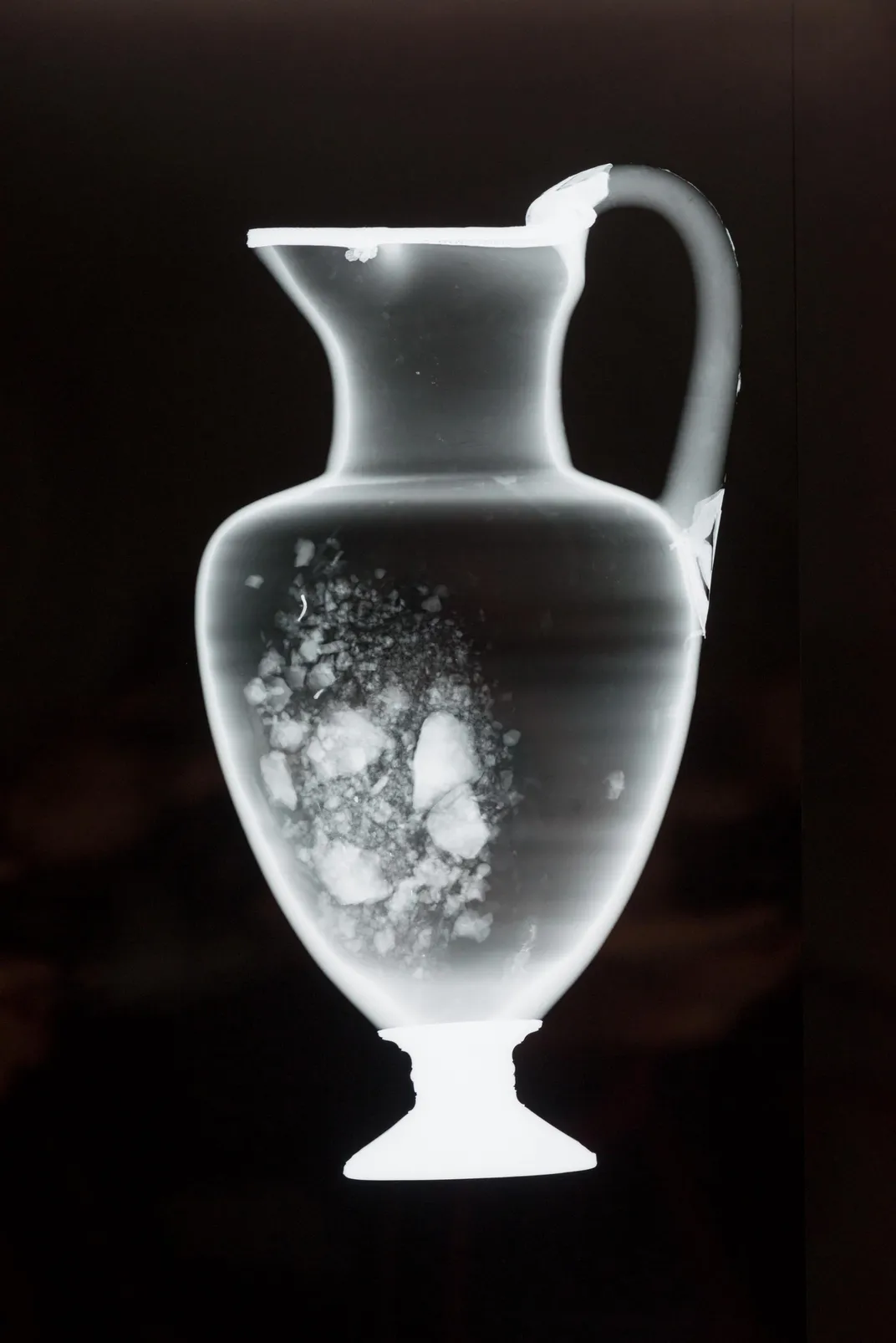Researchers Analyze Burial of Ancient Celtic Prince
French researchers are looking at the construction, composition and origin of artifacts found with the 2,500-year-old skeleton
In 2015, archaeologists in Lavau, France, discovered one of the country’s greatest archeological finds in centuries. In an area being developed as an industrial park, they came across the burial mound of a Celtic prince buried in his chariot along with an assortment of ornate grave goods. Now, Léa Surugue at The International Business Times, researchers are starting to discover how and where many of the treasures were made.
According to Tia Ghose at Live Science, the tomb is believed to be 2,500 years old and shows that the Celts, a culture dating back to the late Bronze Age, were part of the Mediterranean trade network that included civilizations like the Greeks and Etruscans. Among the goods found in the grave were pottery and gold-decorated drinkware as well as a large cauldron decorated with images of the Greek river god Achelous along with eight lion heads. Inside the cauldron there is an image of a Dionysus, the god of wine, looking at a woman.
Ghose reports that merchants from Mediterranean cultures often made lavish gifts to Celtic rulers in centrally located hubs or who controlled important river valleys, hoping to open trade routes to central Europe. That’s likely how the Lavau prince was able to acquire his wealth.
Now, Surugue reports that researchers at France’s National Institute for Preventive Archaeological Research (INRAP) have begun analyzing the cauldron, gold jewelry and other artifacts found with the prince. Using x-rays, tomography and 3D photography, the researchers are determining the state of preservation of the artifacts as well as their composition.
According to Surugue, so far the analysis shows that a belt worn by the prince was woven with threads made of silver, something not found in other Celtic artifacts. Analysis of the bronze in the cauldron shows it was produced by master craftsman who perfected the arts of smelting ore and engraving metal. Even more, the work shows a blending of cultures. One elaborate jug is made of Greek ceramic, decorated in gold with Etruscan figures but also includes silver Celtic designs.
According to a press release, the researchers also examined a sheath that held a knife, finding that it contained very fine bronze threads. They also found that the gold torc—or neck bracelet—as well as several gold bangles show wear marks where they rubbed again the prince’s skin.
The analysis has cleared up one nagging question as well. Researchers were unsure if the skeleton covered in gold jewelry and bangles was a prince or a princess. Analysis of the pelvic bones shows that the Lavau Prince is indeed a prince.
According to the press release, INRAP will continue to analyze the prince and his priceless belongings through 2019.




